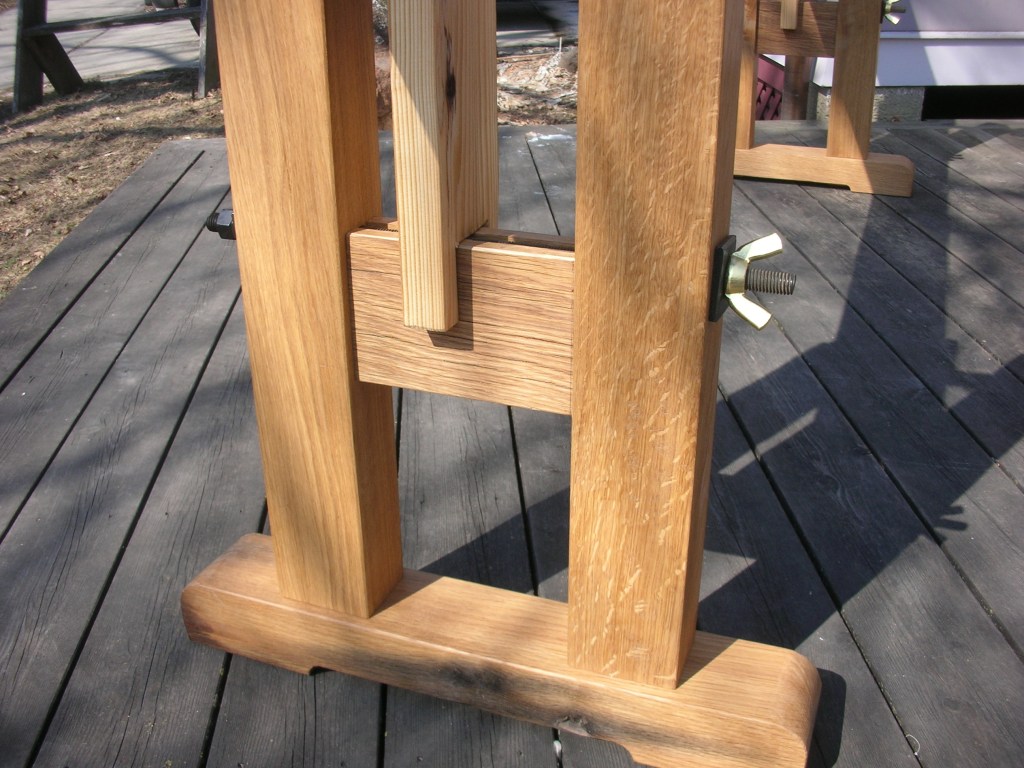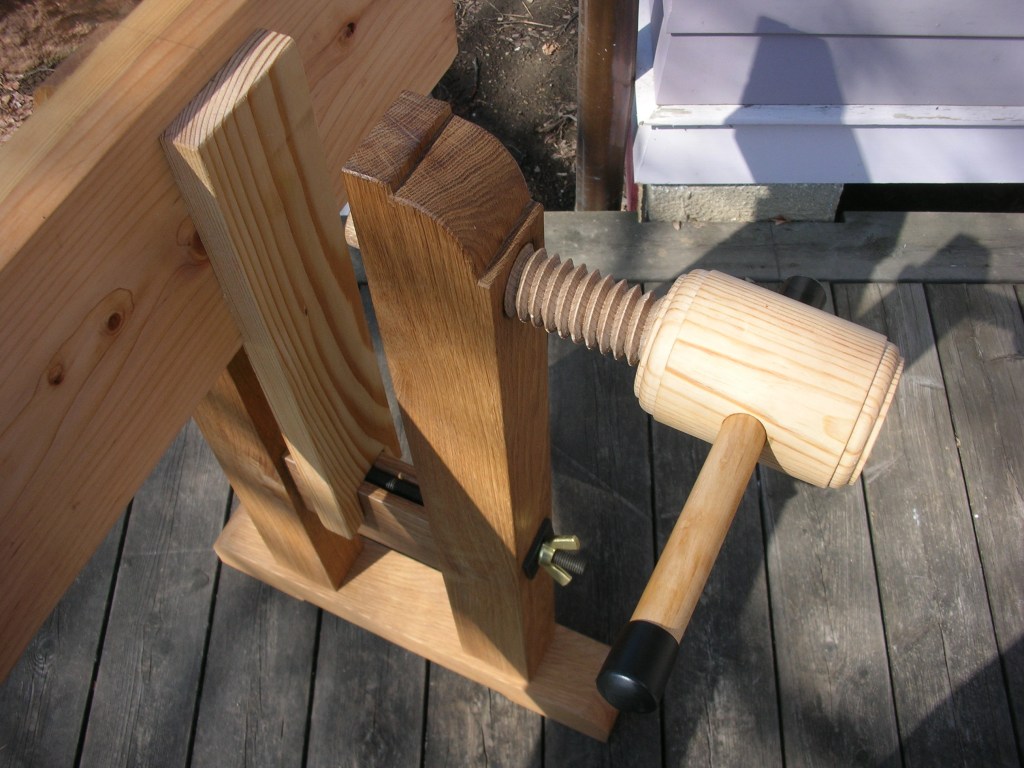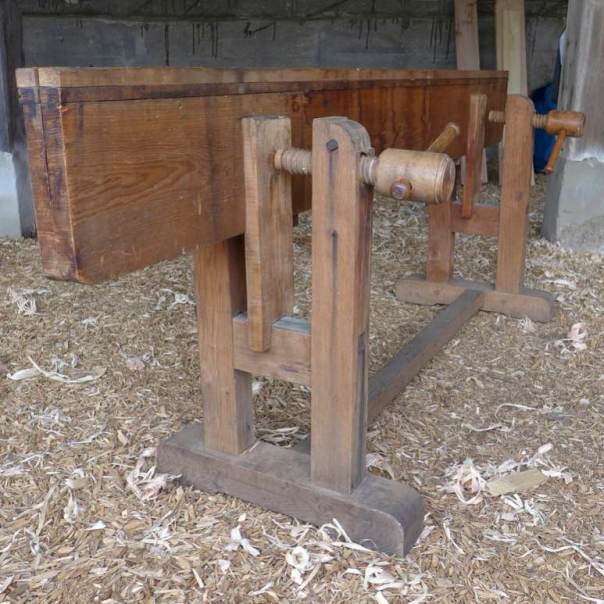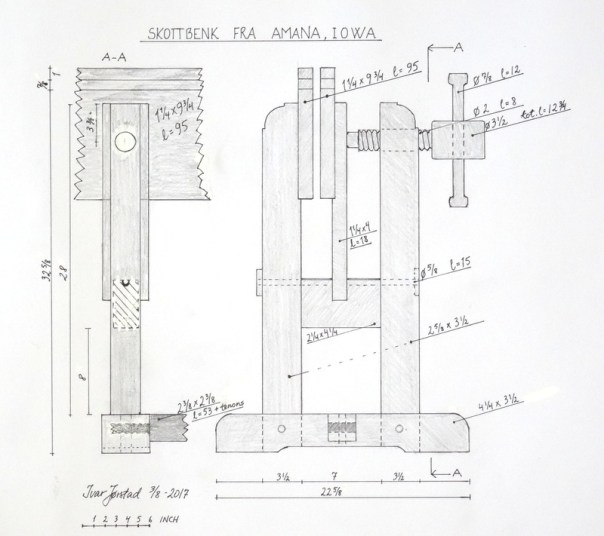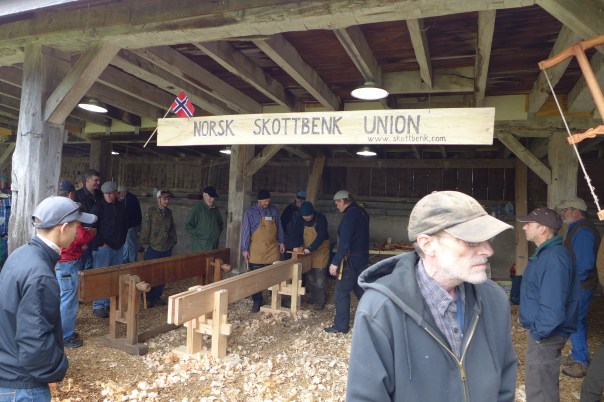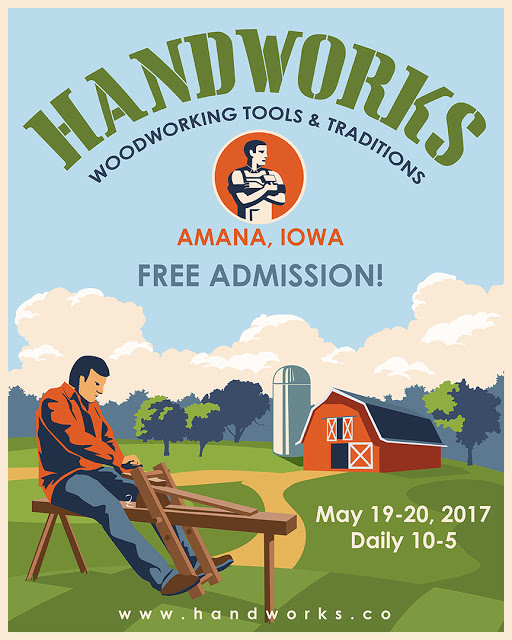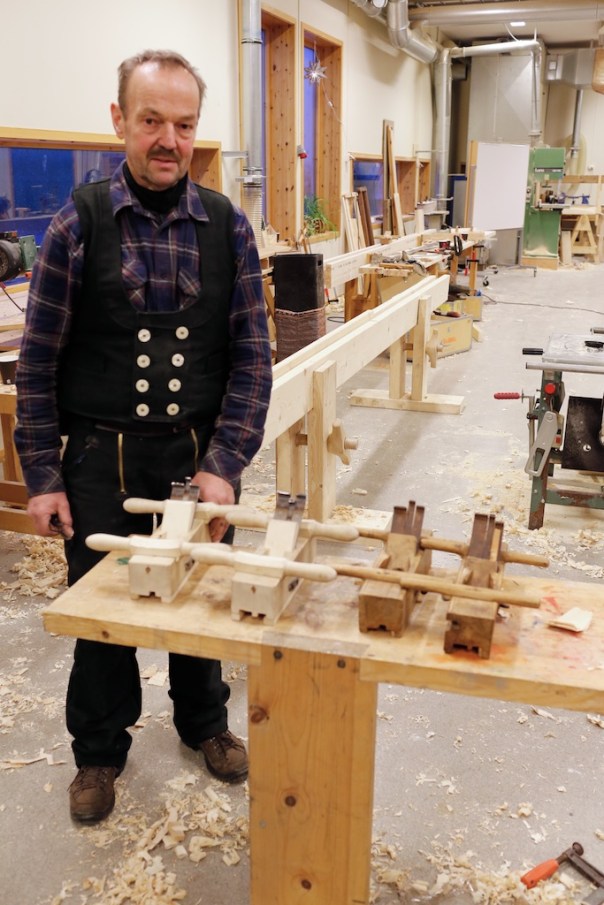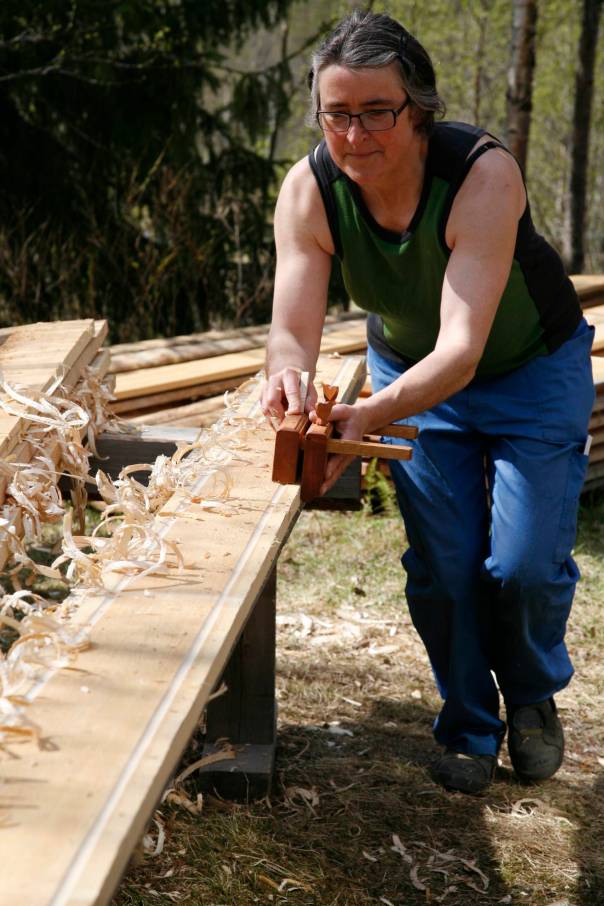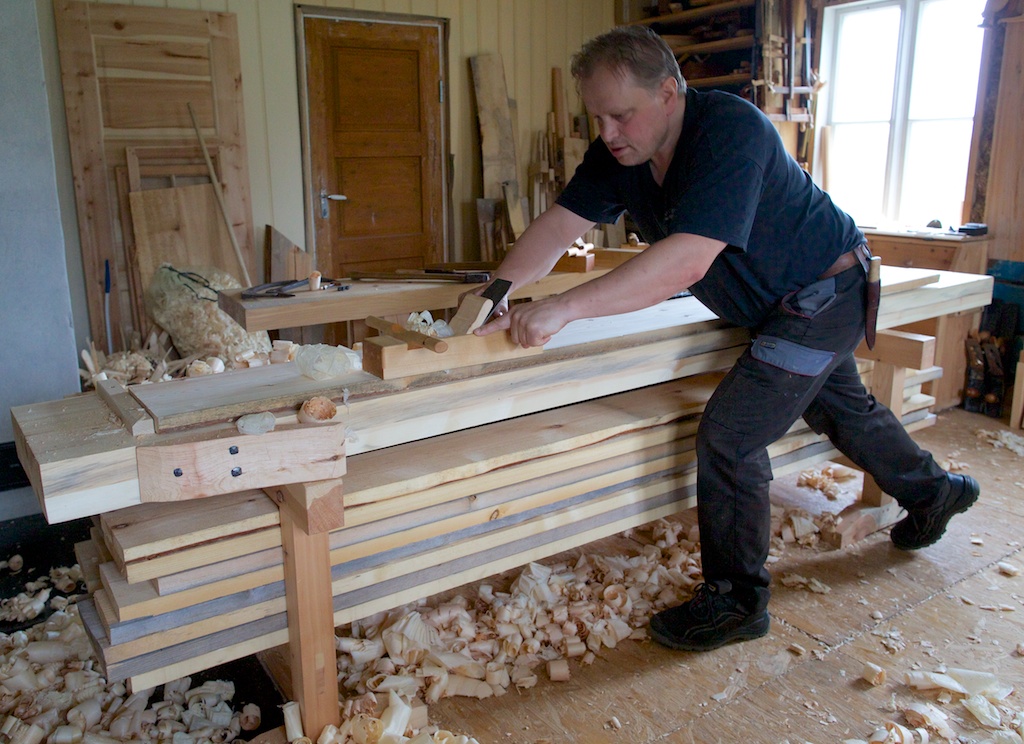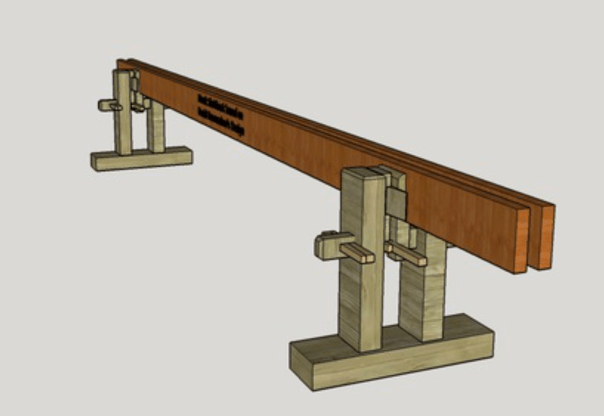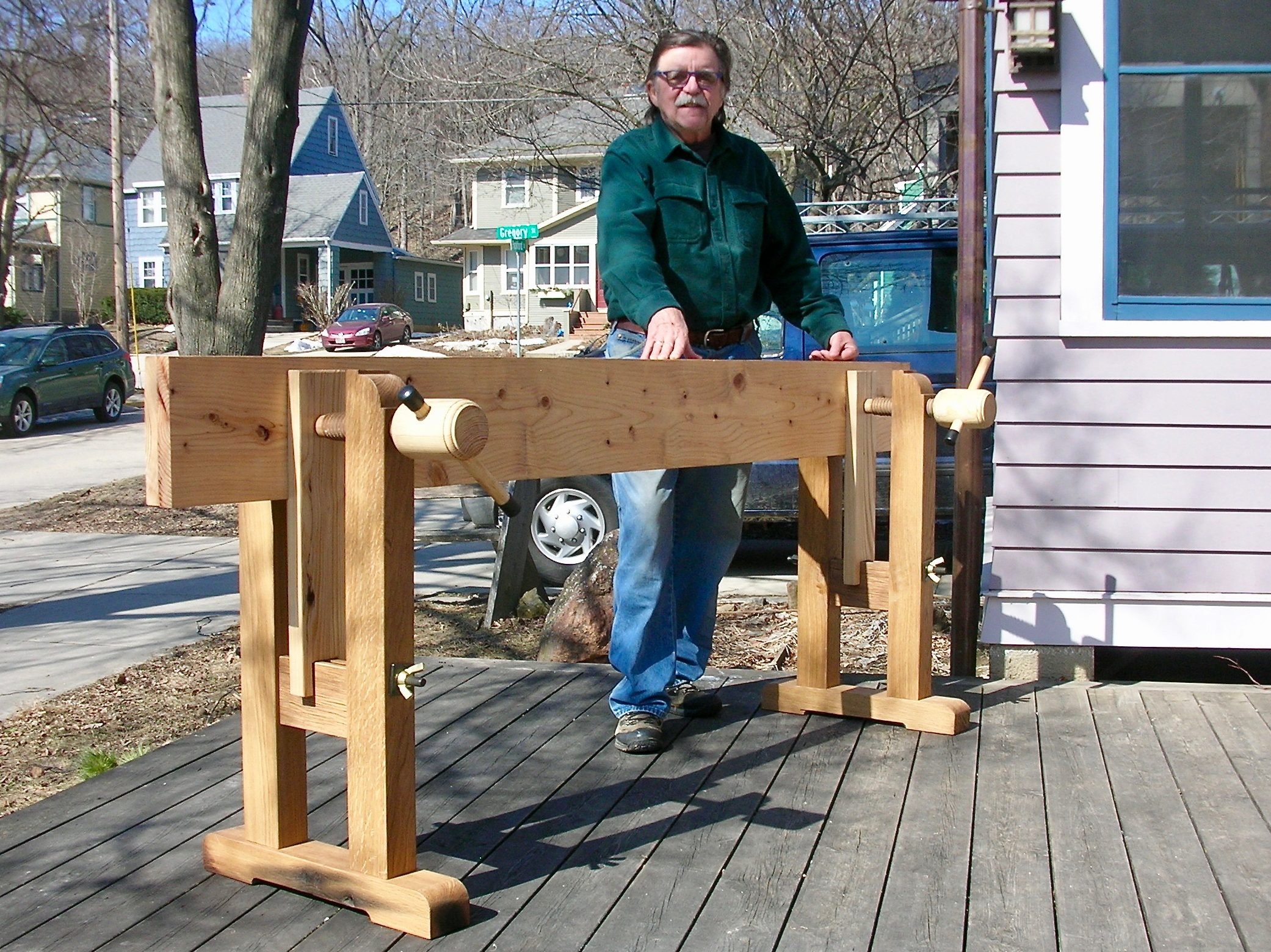
In 2017 some members of Norsk Skottbenk Union made a trip to Minesota, Wisconsin and Iowa in USA to do some research on traditional workbenches for jointing long boards in theese areas, and to meet fellow woodworkers. We had some knowledge about the Aslak Olsen Lie house project in Wisconsin and made a visit to the building site at Folklore Village. Luckily the carpenter Nels Diller where working on the site the day we came and he informed us about the work and showed us the original materials from the house built by Aslak Olsen Lie in 1848-49. We studied the floor boards from the original house and discussed if the boards had been made on a skottbenk. Inspired by this Nels have now made his own skottbenk based on the original old skottbenk we found in Amana, Iowa on our trip in 2017.
Nels Diller are a retired carpenter based in Mt Horeb, Wisconsin USA. He have studied with Ottar Romtveit in the summers of 2005 and 2006 at Raulandsakademiet in Telemark, Norway. He studied Norwegian log building (lafting) and Norwegian timber framing (stavkonstruksjon). They built a replica of the famous loft at Torvertjønn during the course. Nels built a scaled down model in 2012 at Mt Horeb, Wisconsin, USA. They call it a «stabbur» there.
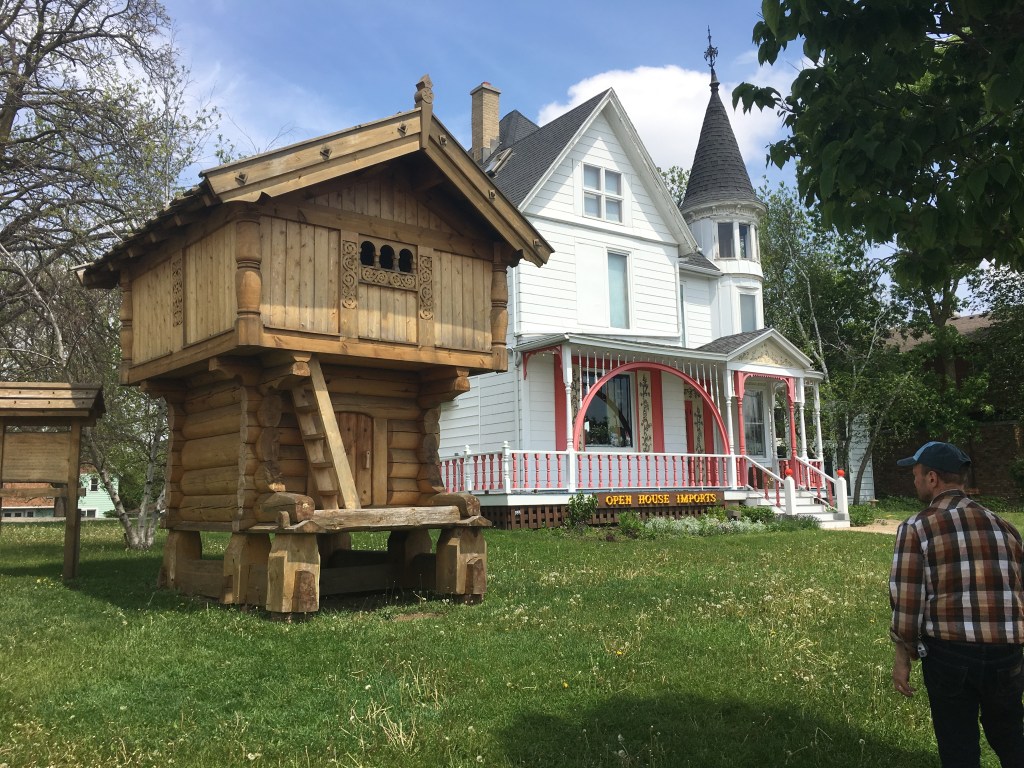
Nels are presently working with Folklore Village, a traditional organization, near Dodgeville, Wisconsin. They are restoring the 1850 home of the Norwegian immigrant, Aslak Olsen Lie. The project is founded by individual contributions and volunteer labor, including the work done by Nels. They have a summer program for paid interns to work on the restoration/rebuilding. You can learn more at www.folklorevillage.org where you click on the Aslak Lie Home.
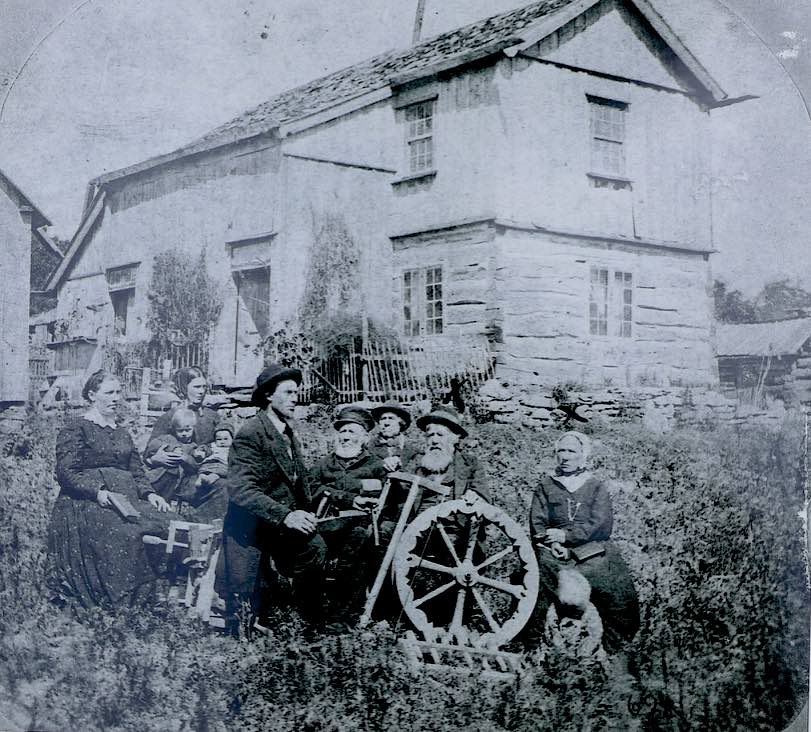
The skottbenk are built from the plans of the original skottbenk found in Amana, Iowa in anticipation of making flooring, window sash, doors and other millwork. If they are able to set up a working shop in the second floor of the building, the skottbenk will become a permanent fixture there. They hope to reproduce the cabinet work of Aslak Olsen Lie within the shop using traditional tools and techniques. There are many existing pieces of Lie´s work in the area.

We in the Union concratulate Nels at Folklore Village as the first official member of Norsk Skottbenk Union in USA. Now we hope many more will come in the years to come. The skottbenk made by Nels are made to be dismanteled for transportation and can also have longer jointing boards for jointing longer pieces. The bench has many very nice and clever details and will serve its owner for many years to come.
